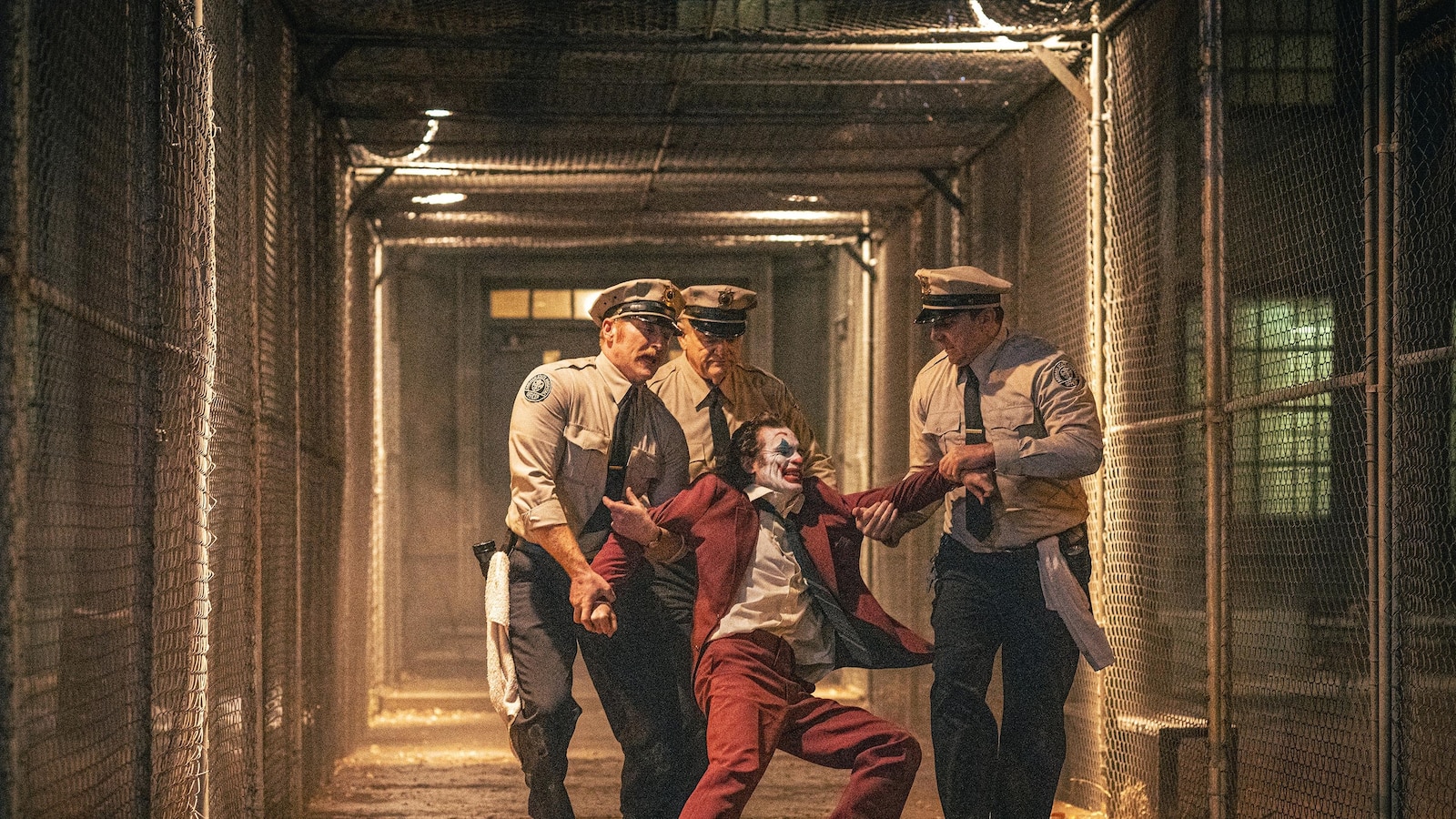Let’s put on a happy face, at least to start, for “Joker: Folie à Deux.”
If there’s one undeniably compelling thing about both Todd Phillips’ divisive 2019 original and his new follow-up, it’s that these movies are best when they dance. The first movie might have been a muddled attempt to retrofit a “Taxi Driver”-styled ‘70s realism into a Joker origin story, but, man, when Joaquin Phoenix is on his toes, it’s hard to look away.
Just the image of a gaunt Phoenix decked out in the red suit, with his green-streaked hair slicked back, was enough to give “Joker” a kick. The role gave Phoenix, a full-bodied actor, a day-glo canvas on which to unleash torrents of movement, cycling between wounded restraint and flamboyant release, in a comic-book genre that usually leaves performers paralyzed by spandex.
He’s nearly as captivating in “Joker: Folie à Deux,” a musical that closely follows the events of the first film as an imprisoned Arthur Fleck (Phoenix) goes on trial for the murders that occurred at the culmination of “Joker.” Even the way Phoenix theatrically smokes as Arthur — which he does quite a lot in “Folie à Deux” — shows you how much he’s luxuriating in the limber physicality of the character.
But any sense of forward momentum has gone out the window in “Joker: Folie à Deux,” which opens in theaters Thursday. Phillips has followed his very anti-hero take on the Joker with an a very anti-sequel. It combines prison drama, courthouse thriller and musical, and yet turns out remarkably inert given how combustible the original was. If ”Joker” — which some claimed sympathized the kind of lone gunmen that populate our real world — stirred debate, “Folie à Deux” is a self-conscious rejoinder to all that discussion, spending much of its time interrogating Arthur’s actions from the last movie.
That makes it a theoretically interesting film but a curiously dull one, particularly given that it stars two such incredibly watchable performers in Phoenix and Lady Gaga, who plays a fellow inmate, Lee Quinzel, infatuated with the Joker. Phillips deserves credit for subverting expectations. Most directors would turn Arthur loose for a sequel chock-full of violence and mayhem, not Burt Bacharach song-and-dance sequences. But laudable as the intentions of “Folie à Deux” may be, it feels thoughtfully but tiresomely stuck in the past.
“You gotta joke for us today?” asks an Arkham State Hospital guard (Brendan Gleeson, back inside a jail post-“Paddington 2”) as they pull Arthur from his cell. He is seemingly even thinner now, his shoulder blades sticking out. A wan look shows he’s jokeless, too, having clearly reverted back to the depression that Arthur earlier stewed in.
That interaction, and others that follow, carries on some of the themes of “Joker,” which imagined Arthur and the mania that springs from him as the warped product of a cruel urban world and failed social safety net. Arthur is now heading for either the death penalty or life in prison, it’s just a matter of whether his attorney (Catherine Keener) can convince a jury that he suffers from split personality syndrome.
We are again asked to consider and weigh how Arthur is treated by those around him, including the guards who at turns mock him, ask him for his autograph or show him a little compassion. Gotham City district attorney, Harvey Dent (Harry Lawtey), believes he should die for killing five, including the late-night talk-show host Murray Franklin live on air. Does Arthur deserve our sympathy? “Folie à Deux” is a little like the “Seinfeld” finale: a moral, courtroom rehashing.
The throngs outside the courthouse clamor not for Arthur but the Joker, who they regard as an anarchist martyr. They crave entertainment, and Arthur, or the Joker, is tempted to give it to them. One psychology expert claims Arthur’s mental illness is “just a show.” In many ways — including a mock Looney Tunes cartoon that opens the movie — “Folie à Deux” continues the first movie’s interest in considering, and satirizing, what it is we crave in entertainment. Do we want the “real” story of Arthur or the fantasy of the Joker?
I’m not sure “Folie à Deux” always successfully pegs audience desire, though. What I most wanted in “Folie à Deux” was for it to stop playing with the concepts of its characters and instead let them breathe a little more on their own. It’s not surprising that the movie works best when Arthur and Lee lock into one other. This is Arthur’s first blush with the love he’s lacked (“She gets me,” he says), but their connection may also have more to do with fantasy. Their time together is actually somewhat limited but, in Arthur’s imagination, their emotions soar in songs, mostly old standards (“Get Happy,” “For Once in My Life,” “That’s Life”), they sing tenderly to one another.
These musical interludes break free of an otherwise fairly bleak and belabored narrative, as a legal and penal system that doesn’t know how to handle Arthur’s pain — or that he’s a reflection of their failure — help twist him back into the Joker. Once the Joker does fully emerge, Phoenix’s Fleck is visibly aghast at what he’s wrought.
All of this wrestling with “The Joker” makes “Folie à Deux” an impressively un-superhero-movie-like, and a deliberate denial of audience expectation. But it’s also spinning its wheels. It’s not surprising that “Folie à Deux” originated in concept as a stage show. It’s stuck in place, with only Phoenix’s dazzling contortions to marvel at.
“Joker: Folie à Deux,” a Warner Bros. release, is rated R by the Motion Picture Association for some strong violence, language throughout, some sexuality, and brief full nudity. Running time: 139 minutes. Two stars out of four.

